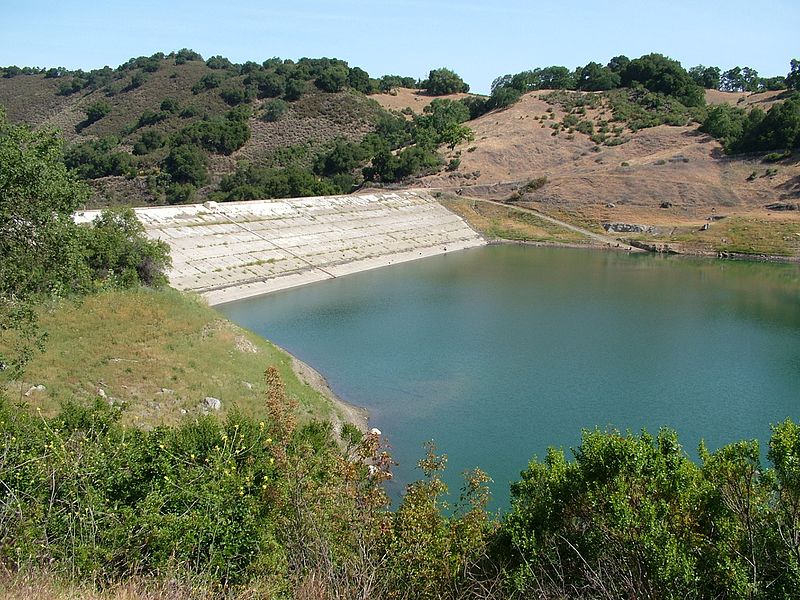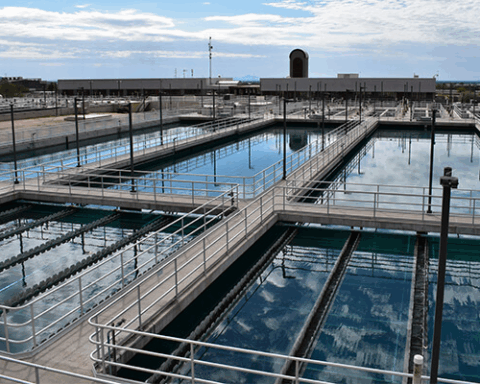A newly released report on California’s State Water Project details the danger of potential water losses due to climate change, but also provides guidance for long-term planning to ensure water security for millions of Californians and the state’s vital agricultural sector.
The State Water Project Delivery Capability Report, issued by the California Department of Water Resources (DWR), estimates that water resources could be reduced if no adaptive measures are taken. This potential decline would be equivalent to about 496,000 acre-feet a year, enough to supply 1.7 million homes annually, the report said.
“The analysis released today underscores the need to modernize and upgrade our aging infrastructure so we can capture water supplies when it’s wet,” DWR Director Karla Nemeth said in a press release. “Modernizing the State Water Project is critical to delivering on the human right to water in California.”
As climate change intensifies, threatening to disrupt typical weather patterns, the state’s ability to provide reliable water supplies faces unprecedented challenges. The state water plan includes more than 700 miles of water infrastructure such as dams, canals and pumping stations that serve the state’s population and agriculture industry. The report offers water managers and planners a more comprehensive view of potential climate scenarios, while providing guidance on future planning and risk assessment.
Key takeaways from the report include:
- Current water deliveries are lower than previously estimated, highlighting the need for immediate action to improve water management and conservation efforts.
- Looking ahead 20 years, climate change could reduce water deliveries by up to 22%, underscoring the urgency of implementing adaptive strategies and investing in resilient infrastructure.
- To address future shortfalls, the report recommends major projects to safeguard water supplies like the Delta Conveyance Project and Sites Reservoir, as well as exploring new ways to store water both above and below ground.
- Rising sea levels will impact water quality in the Sacramento-San Joaquin River Delta, requiring innovative solutions to manage salinity and protect freshwater supplies.
- The report uses updated climate data to provide a more accurate picture of current conditions, allowing water managers to make better-informed decisions and develop more effective long-term plans.
To address the challenges, the report offers water managers tools and information to help plan for an uncertain future. It introduces a risk-informed approach with three climate scenarios – 50%, 75% and 95% levels of concern – each representing different potential outcomes by 2043. Using the report’s framework, water managers are encouraged to use at least two of these scenarios to gauge their systems’ vulnerability to various climate impacts.
For example, the 50% scenario, considered the statistical median, could be used for general planning and environmental impact reports. The 75% or 95% scenarios, which project more severe impacts, allow managers to stress-test their systems and develop contingency plans for more extreme conditions.
DWR emphasizes that the report’s findings should guide a collaborative and proactive approach to ensuring water needs are met. The report recommends water agencies update their Urban Water Management Plans and Sustainable Groundwater Management Plans using this new data. While the new report provides crucial data and projections, the ultimate decisions on risk tolerance and planning strategies rest with local water managers.
The department of water resources is far from finished with the task of guiding the state through an uncertain future. A forthcoming Climate Adaptation Analysis is expected later this year and will provide more details on how communities and local governments can plan for decreased water supplies.
“We need to continue to adapt and invest in the SWP, so that we can add flexibility and resilience for 21st century conditions,” said John Yarbrough, deputy director for the state water plan.
Photo by SMacAfee













